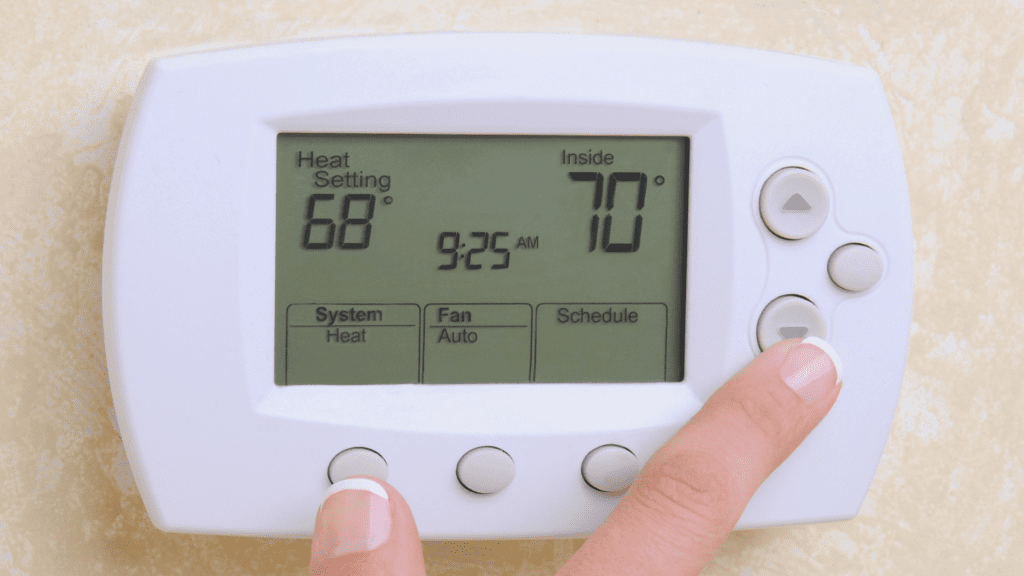As the temperatures rise in Tennessee during the spring and summer seasons, so does the humidity.
It’s common for homeowners to seek relief by adjusting their thermostat settings, particularly the fan setting. However, many people may not realize the impact that their fan setting can have on indoor humidity levels.

The #1 Fan Setting Mistake
In a “green grass” state like Tennessee, humidity can be oppressive. In such cases, it’s essential to understand how to use your thermostat’s fan setting effectively.
While some individuals prefer to run their fans continuously in the “On” position, to optimize their filtration system, this practice (because of the issues it can create) is Parthenon’s #1 Misuse of the Fan Setting. One might experience elevated indoor Relative Humidity levels as a result, exacerbating the discomfort caused by muggy conditions.
Continuous fan operation poses a risk of increasing indoor humidity in several ways. First, it can encourage moisture infiltration from the outdoors, especially during periods of high humidity. Additionally, any residual moisture left on the cooling evaporator coil may not fully drain with the fan “on”. A continuously wet coil during operation further contributes to elevated humidity levels indoors.
The Optimal Use of the Fan Setting
To avoid these issues, it’s best to leave your thermostat fan setting on either “Auto” or “Circulate” if applicable.
In “Auto” mode, the fan operates only when the heating or cooling system is actively running. This helps to maintain consistent indoor comfort without unnecessarily increasing humidity levels.
“Circulate” mode, on the other hand, periodically runs the fan to circulate air throughout your home, promoting better air distribution without continuous operation.
Ideal Humidity Levels
Understanding and controlling indoor humidity levels is crucial for maintaining a comfortable and healthy home environment. In Tennessee, ideal indoor Relative Humidity levels typically range between 40% and 60%. Levels above this range can lead to issues such as mold growth, musty odors, and discomfort, while levels below can cause dry skin, respiratory irritation, and static electricity buildup.
To ensure optimal comfort and indoor air quality, consider investing in a hygrometer to monitor humidity levels in your home. If humidity levels consistently exceed the recommended range, Parthenon can help implement additional measures such as using a dehumidifier or improving ventilation to mitigate excess moisture.

In conclusion, while it may be tempting to run your thermostat fan continuously, especially during humid Tennessee summers, doing so can lead to elevated indoor humidity levels and potential discomfort. By understanding how to use your thermostat’s fan setting effectively and maintaining optimal indoor humidity levels, you can enjoy a more comfortable and healthy living environment year-round.
Related Content: Should I Upgrade To A Smart Thermostat? | Which Smart Thermostat is Best?
If your home is too humid or not staying cool this year, contact Parthenon Plumbing Heating & Cooling by calling 615-298-2995.

